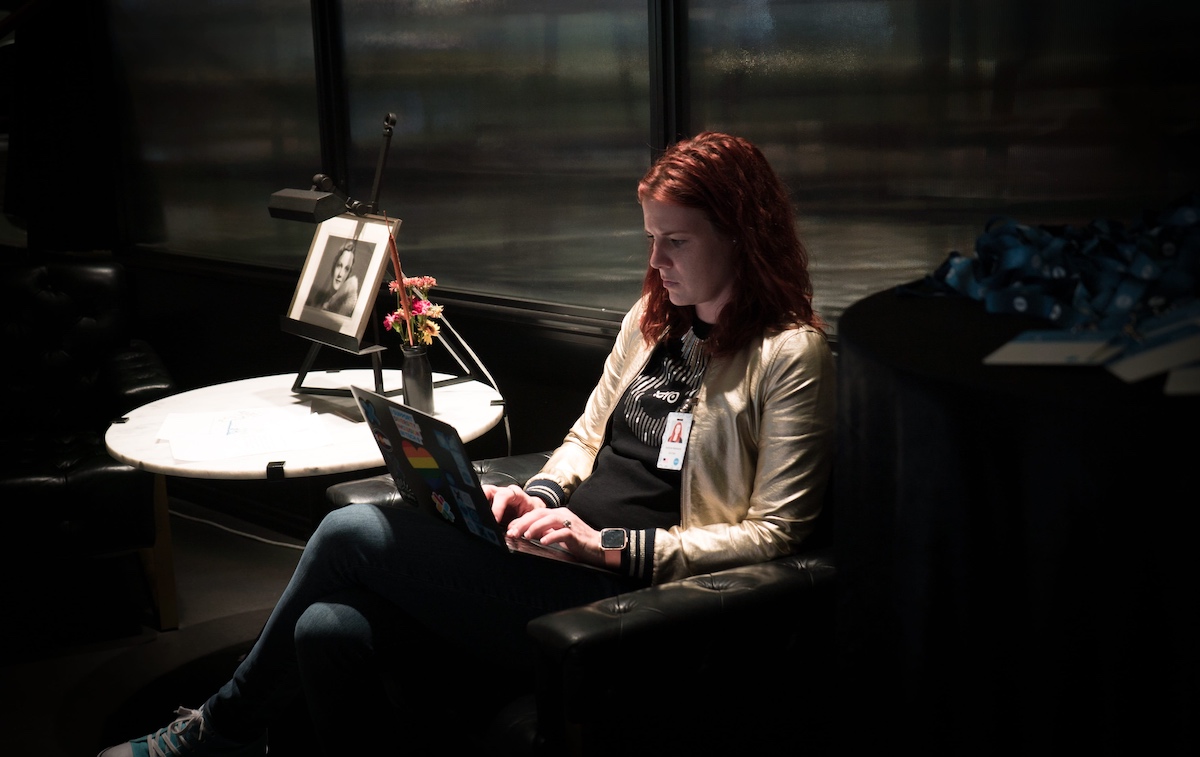Beyond Role Models: How Do We Get More Women Into STEM?

It’s unbelievable how, being 2020, we are still wondering why women are so underrepresented in STEM fields. But here we are. I could flood you with numbers and estimates that show how, in spite of women comprising 46% of the national workforce, they don’t account for even 20% in STEM-related fields. I don’t think, however, that’ll be necessary — especially if you’re working in one of those fields.
It’s not necessary because it only takes a look around to see how bitterly true that underrepresentation is. Science and technology-related areas alarmingly lack gender diversity, from the junior level all the way up to the C-level executives. If you are working in a tech company, you’ll surely notice how it all seems like a boys club. Unfortunately, as we stand now, it doesn’t seem it might change soon.
Even when the numbers of women working in STEM has been improving for some time, we are still far from seeing a more balanced workforce in its industries. We could blame a lot of things – societal expectations around genders, historical trends, not-so-invisible biases. But I’m not trying to play the blame game here. Instead, I think that’s more important to understand how we can defeat those things and get more women interested in STEM fields.
Looking Beyond the Role Models
One of the things I hear more frequently when discussing the gender diversity issue in STEM is that we need more female role models that inspire other women to go down the same path. In theory, that makes sense. What people that support that vision believe is that “STEM women” will encourage other women into thinking “if she can, I can.” That’s a nice sentiment and has some truth to it. Unfortunately, it isn’t nearly enough to end the gender gap.
There are other ingrained sentiments and practices that drive women away from STEM fields, especially at a younger age. I’m not talking about those biologically-centered approaches that claim that girls are wired differently than boys so we should leave things to sort them out for themselves. That’s a reductive view of the world that leaves out the complexities of the social fabric and how there are naturalized views and practices that shape our daily lives.
In the same way we can state that role models by themselves won’t change the collective minds of hundreds of thousands of women around the world, we can’t say they can’t be changed because of nature, either. We need to look beyond that and start poking at some of the neglected fundamental processes that are keeping women away from STEM. To me, there are three very important ones.
Science as an Exclusive Club
In a great interview from a couple of years back, Maria Klawe, president of Harvey Mudd College, shared how her college made women feel more welcome in their science careers – making introductory courses less intimidating. The idea is fairly simple: getting rid of the notion that you need “a special kind of brain” to study science. Instead, educational institutions should shift their focus to emphasize that sciences are disciplines that reward hard work and persistence.
That’s not all Klawe proposes. She also says that introductory classes should be more practical rather than betting on the appeal of science’s own structure. So, instead of enticing people to take science classes because of abstract concepts, Klawe says education should focus on showing the things you can do for science.
Though I can’t speak for other disciplines, that feels like a perfect premise for getting more interested in computer science. In a time where everything is digitized (or in their way to become digital), appealing to new students from the very potential of science seems more attractive for everyone, women included.
Think about it. Instead of relying on the traditional appeal of math or chemistry, focusing on potential benefits such as curing diseases, developing new intelligent devices, or improving everyday things (from cooking to exercising) obviously appears as more universally approachable. It takes away that feeling of STEM being an exclusive club for the “naturally gifted” and makes it more mundane and reachable.
Challenging the Educational Processes
One of the things that most people would agree on about the women in STEM issue definitely has to do with gender stereotypes. Tech, engineering, and “building stuff” has always been seen as a “boys thing” and society, even in its efforts to shift its focus, still perpetuates that idea. In fact, it has been so ingrained in people’s minds for generations that it feels like a natural thing. Obviously, it’s not.
How can we break that? First and foremost, we have to drive the change ourselves by deconstructing that artificial nature and understanding that anyone can do whatever they feel they can or want to do. Such an epiphany will surely be hard to embrace for adults that have accepted otherwise since they were kids. However, there’s the hidden key to start solving the issue: educating from a young age.
As adults, we can come to terms with this new “radical” idea that anyone can be a scientist or an engineer but we have to make sure we aren’t unconsciously perpetuating a stereotype that contradicts that realization to children. Fortunately, some companies have found unlikely allies to instill that thought into children, both boys and girls – robots.
By developing gender-neutral robotics that feel like toys, companies like SmartGurlz and WonderWorkshop are trying to teach children to code or engineer. Learning from their experience can be enlightening. According to Vikas Gupta, CEO of Wonder Workshop, “every child brings their preconceived notions to play. So when they see something they map it back to something they’ve already seen.”
In other words, children try to fit their toys into a mental map of the notions they already carry, which are probably the ones inherited from their parents. By developing non-gendered robots that don’t resemble other toys, these companies are trying to bypass those preconceptions – and are succeeding, getting more girls to play with toys that bring them closer to STEM in a fun way.
The takeaway is that we need to start challenging our educational processes. First, we, as adults, should take a deep look into our own education and the societal beliefs we’ve embraced as natural. Then, we need to start taking a look at the educational system we’re using with our children to make sure that those beliefs aren’t seeping into their minds and solidifying long-standing stereotypes about gender.
The Devil in the Details
Finally, there are the small things a lot of people like to dismiss simply because, well, we need to focus on the big picture. We don’t. Well, we have, but the big picture is made up of smaller parts that we can change to make a different picture, one with women in STEM in it. It’s true that we can quickly get lost in them but ignoring them isn’t a possibility either—unless we want to end up dancing with the devil hiding in them.
Let’s round back to the role models for a second. Sure, we need them, so companies should start hiring women developers, engineers, and scientists. That’s a given. However, enticing them to apply is a tricky thing that a lot of companies don’t think about. Even when a company offers and publicizes a women-driven hiring campaign, the number of female interviewees isn’t balanced. Why’s that?
We should focus on how job descriptions are phrased. From gendered sentences to a too-long list of desirable traits, it takes something as small as a job description for women to shy away from a potential career, especially in STEM (where the bar for requested qualifications is often set high). The same could be said for details such as the text of a company website About us page, the images used on their social network, or the seemingly innocuous video of an event where only men are speakers.
I could argue that all of those details are hiding bigger issues and no one could hold it against me. That is that the inherent biases I’ve mentioned earlier tend to creep up unconsciously in the least expected places and a lot of women react to them. Given how many years we’ve spent with STEM being a boys club they might be hard to see but they are there and we need to shift our focus to how we are going to change them to make women feel more welcome.
All of this seems like an insurmountable challenge? It isn’t. Sure, it might take a climb-the-Everest level of effort to change the perception around STEM and its relationship to women. The good news is that we’re headed in that direction. Just by discussing the subject, we’re already contributing to preventing the issue from being as invisible as it was for decades. Of course, that’s not enough.
Realizing the problem is a good start but we need to go deeper. Everyone should play their part and add up to the solution. From educational institutions shaking up their curricula to fit a different view of STEM to companies joining into the trend and making women feel seen, there’s something for everyone to do. Because, in the end, women will get into STEM not just because they are inspired by role models but because STEM is a fit for them as perfect as any other discipline they like.






